Design: Vehicle Headlights
As I indicated a few weeks ago when talking about the use of headlines, I promised future posts on the design of automotive lighting — headlights & taillights. No, this isn’t becoming an auto blog. Vehicles are a fact of life in urban areas. In fact, pedestrian deaths are on the increase. From March:
It’s the oldest and most basic form of transportation — walking — and more people are doing more of it to get fit or stay healthy. But there’s new evidence today that even walking across the street is getting more dangerous.
A report released today by the Governors Highway Safety Association shows that the number of pedestrians killed in traffic jumped 11 percent last year, to nearly 6,000. That’s the biggest single-year increase in pedestrian fatalities ever, and the highest number in more than two decades.
“It is alarming,” says GHSA executive director Jonathan Adkins, “and it’s counterintuitive.” (NPR)
In October 2015 the death rate was becoming a local issue, see: Rising number of pedestrian deaths has St. Louis officials concerned. Distracted driving and distracted pedestrians, of course, are partly to blame. A year ago the Insurance Institute for Highway Safety (IIHS) began testing vehicle headlights:
The ability to see the road ahead, along with any pedestrians, bicyclists or obstacles, is an obvious essential for drivers. However, government standards for headlights, based on laboratory tests, allow huge variation in the amount of illumination that headlights provide in actual on-road driving. With about half of traffic deaths occurring either in the dark or in dawn or dusk conditions, improved headlights have the potential to bring about substantial reductions in fatalities.
Recent advances in headlight technology make it a good time to focus on the issue. In many vehicles, high-intensity discharge (HID) or LED lamps have replaced halogen ones. Curve-adaptive headlights, which swivel according to steering input, are also becoming more widespread. (IIHS)
In the initial test only the Toyota Prius V got a good rating — out of 31 vehicles tested. Lighting didn’t improve with the price of the car.
By October 2016 IIHS released results of their truck headlight test:
Out of 11 pickup trucks (and 23 possible headlight combinations) tested, the Honda Ridgeline was the only one to earn a “Good” rating, the highest mark possible. One truck earned an “Acceptable” rating, a few were deemed “Marginal,” and a majority scored a “Poor” ratings.
As previously reported, IIHS headlight testing includes high- and low-beam performance on straight roads and curves. The tests also include glare toward oncoming traffic.
The IIHS tested all possible headlight combinations, which include halogen, high-intensity discharge (HID) lamps, and LEDs. That said, the only truck to receive the institute’s highest mark was the Honda Ridgeline equipped with LED low-beam headlights–Ridgeline trucks with halogen units earned a “Poor” rating. (Motor Trend)
Regulation is important, but it must change and keep up. From last month:
Outdated federal rules have blocked automakers from introducing adaptive beam headlamps that automatically adjust to oncoming traffic to reduce glare and help drivers see better, even though the technology is legal and available in Europe and Japan. At the same time, sleek styling and manufacturing mistakes on currently available systems has led to poor performance on the road, including excessive glare and insufficient light on the pavement.
“Regulators have not done a lot to help this through inaction,” said Greg Brannon, director of automotive engineering at national motor club AAA. “There’s technology available today that could potentially reduce some fatalities, and it would be simply a matter of regulation change to allow that in the U.S.”
Japanese automaker Toyota asked the National Highway Traffic Safety Administration in 2013 to allow adaptive beam technology, which is already widely used in Europe and Japan, particularly in luxury vehicles. The Alliance of Automobile Manufacturers, which represents major automakers on Washington policy issues, backed the petition.But four years later, NHTSA hasn’t made a decision. (USA Today)
Here are some examples of how headlights have changed over the years.
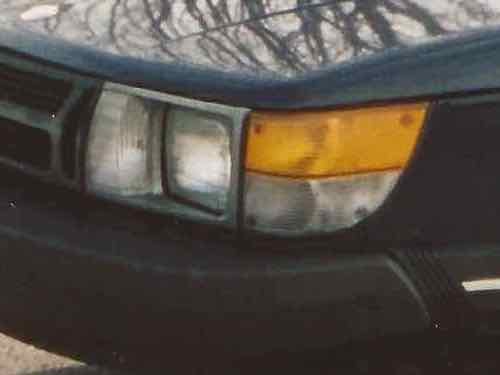
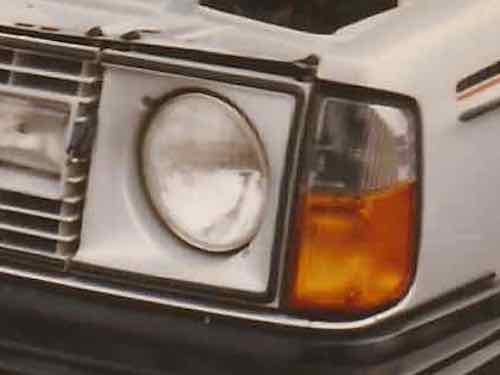
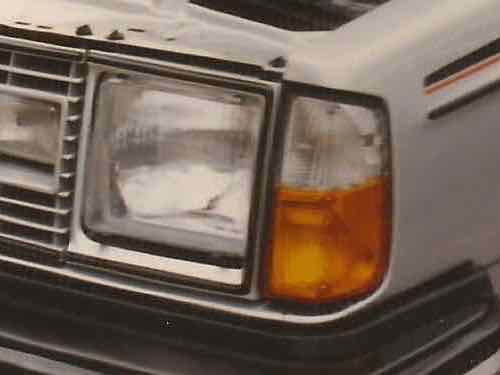
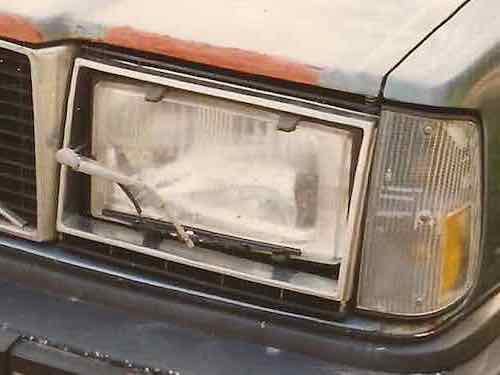
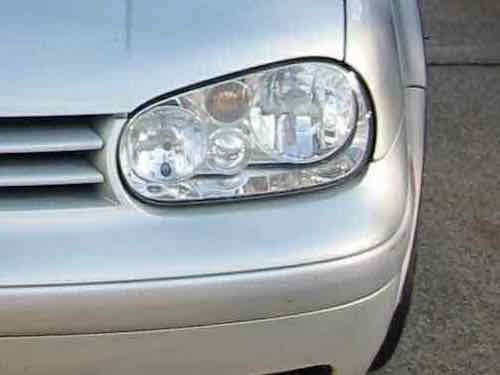
Later cars were easier to replace the bulb. Still, US headlights differ from models sold in other countries. They get glass, we get plastics.
Most modern headlight lenses are made of clear and nearly unbreakable polycarbonate plastic or a similar material. The lenses are treated at the factory with a special coating that protects them from the ultraviolet (UV) rays in sunlight, vehicle exhaust fumes and other environmental contaminants. In fact, to obtain government approval, plastic headlight assemblies must pass a three-year U.S. Department of Transportation durability test.
In normal use, the life of a headlight’s protective coating depends on the level of exposure to the hazards mentioned above – especially the amount and intensity of sunlight. AAA inspected a representative sample of used vehicles and determined that five years is the approximate timeframe in which visible deterioration of headlight lenses begins to appear. (AAA)
However, the quality/quantity of light is improving. From last week:
The Insurance Institute for Highway Safety reported Tuesday that only two of the U.S. auto industry’s 37 mid-size sport-utility vehicles offer headlight packages with “good” performance.
Safety advocates warn that poor headlight performance, including incorrectly aimed beams and excessive glare, endangers motorists and pedestrians.
IIHS, which has been gradually testing the hundreds of models sold in the U.S., concluded that 11 models offer “poor” headlights, 12 fall in the “marginal” category and 12 are “acceptable.” The organization ranked 2017 models based on the best-available headlight package on each vehicle.
By comparison, 12 of the 21 small SUV models tested by IIHS in 2016 delivered “poor” performance, while only four were “acceptable.” (USA Today)
I’ll save recent headlights, daytime running lights, and front turn signals for a future post.
— Steve Patterson